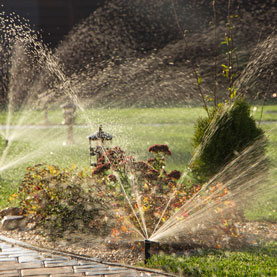
6 Common Mistakes That Can Kill Your Plants
Jan 07th 2019
An impressive landscape around a home or business doesn’t appear overnight. With patience and persistence, many people are able to create an impressive lawn while learning a thing or two about plant care along the way. While learning how to care for your landscape, avoid the following six common mistakes that can kill your plants.
When it comes to Gainesville landscaping, we understand mistakes happen from time to time. If you’re not sure how to fix an issue within your landscape, contact Evergreen Lawn Care. With years of experience and the most up-to-date landscaping best practices, our professional team can quickly repair any plant mistake. Contact us to schedule landscaping services today.
1. Overwatering & Underwatering
In a perfect world, every bush, plant, shrub, and tree would have the same moisture and water requirements. But since a perfect world doesn’t exist, many home and business owners find themselves walking an unnecessary tightrope when it comes to lawn care in Gainesville. A great way to avoid water-related headaches is to create a landscape diagram and watering schedule for all of the plants on your property. The diagram can be referenced for identifying the location of each plant, while the watering schedule ensures everything is watered adequately.
2. Not Using Enough Mulch
A mistake commonly made by individuals who are still developing a green thumb is not using enough mulch or skipping this vital landscape component altogether. This is kind of understandable — the multitude of styles and types of mulch can be eye-opening at first glance. But mulch provides three key benefits to any plant by improving water retention, preventing damage to the root system through soil erosion, and controlling pest and weed infestations.
3. Neglecting The Nosy Neighbors
We’re not talking about the actual neighbors who use your snappy landscape as inspiration for theirs. The nosy neighbors we see too often in residential and commercial landscapes are aggressive and invasive plants. English ivy, Japanese honeysuckle, and purple loosestrife are three examples of non-Florida friendly plant species that look pretty but can quickly become a pretty big headache. Landscapes thrive with plant species commonly found in the area — Florida native planting typically require less care and yields greater longevity than planting non-local species.
4. Bad Spacing Leads To Overcrowding
The plants found in landscaping in Gainesville, FL, and you share a common trait — both enjoy kicking back and stretching out after a long workweek. Well, maybe the landscape can’t literally stretch out but the plants do appreciate ample space to grow. If you buy new plants as seedlings or grow them from seeds, make sure to follow the planting directions on spacing requirements. Overcrowding reduces the amount of air circulation — necessary for proper photosynthesis — and sun exposure while raising the risk of disease.
5. Forgetting To Plan Before You Plant
How a landscape is planned and what is planted determines how much, when, and where shaded areas will appear. But, keep in mind each plant has a specific sun exposure requirement, such as full sun or partial shade. That’s why planning a garden or landscape before getting your hands dirty is crucial. Too much shade and a plant can languish whereas too much sun exposure can cause some plants to burn up.
6. Using The Wrong Types Of Soil
So much is said about how to keep plants and landscaping happy and healthy that it’s easy to forget about the integral role of the soil underneath. Every soil has a pH level, which may range from acidic to alkaline (basic) in one lawn. Though most plants prefer a neutral soil pH, certain ones will grow best in slightly acidic or slightly alkaline soils. Most home improvement stores and garden centers carry basic soil testing kits that will determine the pH along with the balance of minerals and nutrients.
